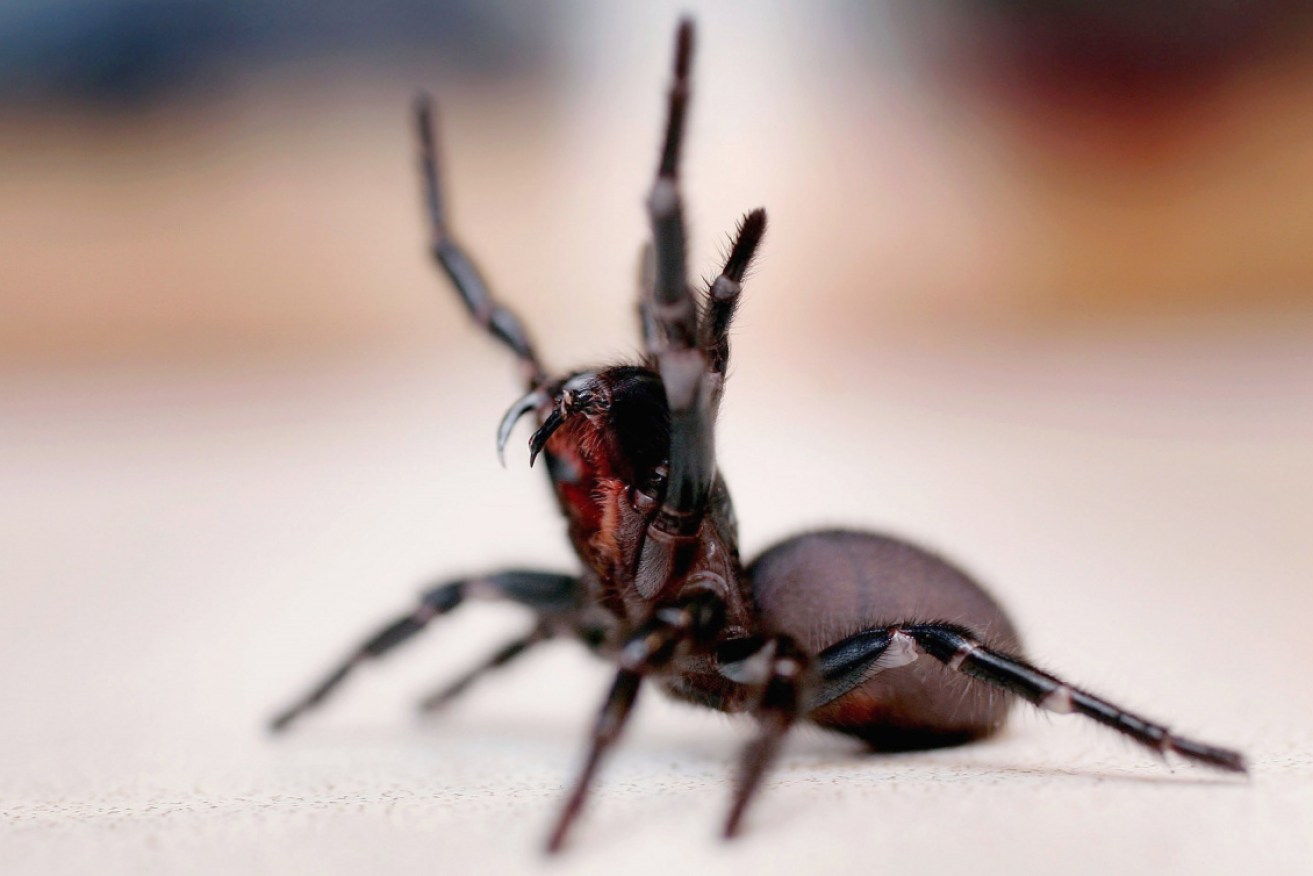Funnel web saves the world: Spider teamed with fungus wipes out malaria


Without treatment, a funnel-web spider can kill you stone dead in 15 minutes flat Photo: Getty
Australia’s deadly funnel web spider species has graduated from creepy nightmare to potential hero against an even more prolific killer.
US scientists have married the toxin from the Blue Mountains funnel web species with an insect-killing fungus to combat malaria-carrying mosquitoes – what’s known as a transgenic remedy.
In a world-first trial, 99 per cent of a mosquito population was wiped out in a screen-enclosed, simulated village setting in Burkina Faso, West Africa.
This is a significant breakthrough in what remains a complex and devastating global health crisis.

Malaria kills 400,000 people a year, mainly children under five. Decades of trying to control mosquito populations has failed. Photo: Getty
There are more than 200 million cases of malaria a year, according to the World Health Organisation.
Four hundred thousand people die annually from the disease, most of them are children under the age of five.
Insecticides have made the situation worse
For decades, insecticides have failed to control mosquitoes that carry the malaria parasite – and only made the situation worse, with the development of insecticide resistance among many mosquito strains.

The screened-in simulated village where the field trial was carried out. The mosquito population crashed beyond recovery in just 45 days. Photo: University of Maryland
This is why scientists have turned to transgenics, which amounts to building a hybrid organism. In the process the genome of an animal, plant or fungus is altered by the transfer of a gene, or genes, from another species, or breed. Until now, no transgenic approach made it beyond laboratory testing.
In this instance, the fungus used in the trial, Metarhizium pingshaense, is a naturally occurring pathogen that infects insects in the wild and kills them slowly. It has been used to control various pests for centuries.
Insect-killing fungus learns to secrete spider toxin
According to a statement from the university, the scientists used a strain of the fungus that is specific to mosquitoes and engineered it to produce a toxin that kills mosquitoes more rapidly than they can breed.
The toxin was a pre-existing insecticide derived from the venom of the Australian Blue Mountains funnel-web spider, and has been approved by the Environmental Protection Agency (EPA) for application directly on crops to control agricultural insect pests.
It’s marketed under the name Hybrid. This poison-secreting fungus caused mosquito populations in their test site to collapse to unsustainable levels within two generations.
“No transgenic malaria control has come this far down the road toward actual field testing,” said Brian Lovett, a graduate student in the University of Maryland’s Department of Entomology and the lead author of the study paper.
“This paper marks a big step and sets a precedent for this and other transgenic methods to move forward.”
After demonstrating the safety of their creation in the lab, the Maryland researchers travelled to malaria-endemic Burkina Faso, and teamed up with local scientists to carry out their field test in a controlled environment.
From simulated to populated village
For this, they constructed a 608-square-metre, screened-in structure they called MosquitoSphere.
Inside, multiple screened chambers contained experimental huts, plants, small mosquito-breeding pools and a food source for the mosquitoes.
In one set of experiments, the researchers hung a black cotton sheet coated with sesame oil on the wall of a hut in each of three chambers.
One sheet received oil mixed with the transgenic fungus, one received oil with wild-type fungus, and one received only sesame oil. Then, they released 1000 adult male and 500 adult female mosquitoes into each chamber to establish breeding populations. Within 45 days the colonies had collapsed.
The next step is to replicate the experiment in a local village or community. The researchers say their experimental model would be easy for local communities to employ.
Black cotton sheets and sesame oil are relatively inexpensive and readily available.
There are many regulatory and social benchmarks to meet before deploying this new method in an open environment, but the researchers said this study helps make the case for such trials.








